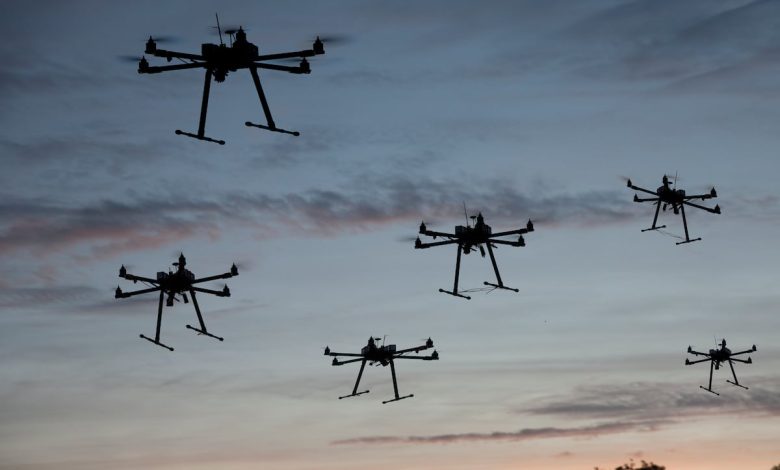Pentagon taps commercial vendors for low-cost, throwaway drones

Pentagon officials want to build America’s arsenal of cheap, disposable drones, staple weapons of the war in Ukraine, pinging commercial vendors for systems with mass-production potential.
The Defense Innovation Unit released a solicitation this week for one-way, uncrewed aerial systems that can fly at ranges of 50 to 300 kilometers in low-bandwidth, GPS-denied environments.
“Recent conflicts have highlighted the asymmetric impact low-cost, one-way unmanned aerial systems have on the modern battlefield,” DIU said in the notice. “The Department of Defense must be able to employ low-cost precision effects at extended ranges.”
DIU plans to hold a live flyoff demonstration as soon as December to evaluate the proposed systems.
Small, one-way attack drones have featured heavily in recent conflicts — from Ukraine to the Middle East. Since last fall, the Iran-backed Houthi militia group has targeted commercial shipping vessels in the Red Sea, using aerial vehicles, uncrewed surface vessels and cruise missiles. Last week, the group launched what the Pentagon termed a “complex attack” on U.S. ships in the region.
On Monday, Secretary Lloyd Austin announced that the Pentagon would focus the next round of its Replicator effort — a process for quickly fielding high-need technology at scale — on countering drone threats like these. But the department also recognizes the impact these systems can have and wants to stock up on its own supply.
“Reliable, affordable, and adaptable long-range UAS platforms that allow for employment at scale will maximize operational flexibility for the joint force,” DIU said.
A DIU spokesperson told Defense News that while the drones the department wants could perform attack missions, it’s also interested in systems that can fly electronic warfare, ISR and communications relay payloads.
According to the solicitation, the vehicles should also be hard to detect and track, have several pathways for two-way communications and be equipped with mission planning software. Critically, the department wants modular systems that can integrate new hardware or software in a matter of hours.
“Proprietary interfaces, message formatting or hardware that require vendor-specific licensing are not permitted,” DIU said.
The notice doesn’t detail how many systems the department might buy and it doesn’t set a cost target. The spokesperson said that omission was intentional because DIU’s selections won’t be based on the cost of a particular drone, but on the cost of the effect the platform achieves.
“The best way to think of what we’re targeting is a cost per effect,” the spokesperson said. “If we launch one $1M platform or ten $100k platforms and generate the same effect, then the cost per effect is the same and that’s what we want to focus on.”
Courtney Albon is C4ISRNET’s space and emerging technology reporter. She has covered the U.S. military since 2012, with a focus on the Air Force and Space Force. She has reported on some of the Defense Department’s most significant acquisition, budget and policy challenges.







